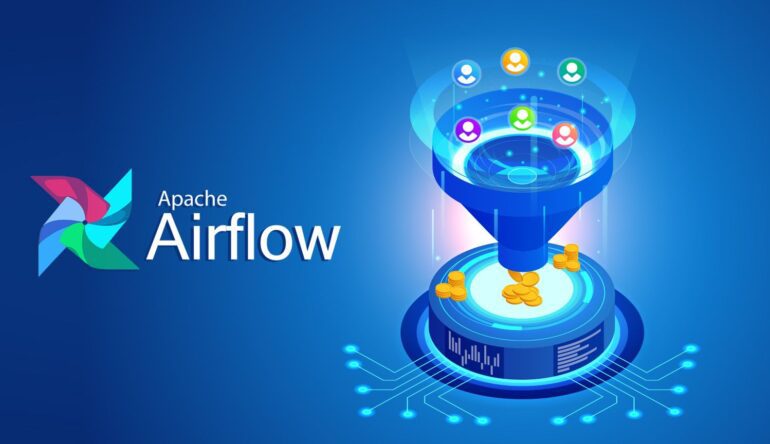TL;DR:
- Apache Airflow simplifies the creation, scheduling, and monitoring of machine learning workflows.
- It offers a comprehensive solution for managing data, training models, and deploying them.
- Airflow’s operator ecosystem allows seamless integration with various cloud providers and services.
- Recent updates include enhanced logging and metrics with OpenTelemetry and more pluggable architecture.
- Airflow 2.6 introduces sensors and notifiers for streamlined workflow management.
Main AI News:
Apache Airflow, the renowned open-source project revolutionizing the world of machine learning pipelines, has recently undergone notable enhancements. In an engaging discussion on The New Stack Makers, three distinguished technologists from Amazon Web Services shed light on these advancements and the unparalleled user experience they bring.
As a Python-based platform, Apache Airflow empowers users to author, schedule, and monitor workflows with exceptional ease. Its capabilities are particularly well-suited for machine learning applications, encompassing pipeline construction, data management, model training, and deployment.
The versatility of Airflow transcends the various stages of machine learning pipelines. It efficiently retrieves data and executes extraction, transformation, and loading (ETL) processes. Furthermore, it intelligently tags data, conducts comprehensive training, deploys models seamlessly, performs rigorous testing, and ultimately delivers the final product to production environments.
During a captivating episode of Makers recorded at the esteemed Linux Foundation’s Open Source Summit North America, our esteemed guests, all integral members of the AWS Managed Service for Airflow team, shared their reflections on the continuous improvement efforts surrounding Apache Airflow:
Dennis Ferruzzi, an accomplished software developer at AWS, contributes significantly to Airflow as an esteemed contributor. Ferruzzi’s current focus lies in Project API-49, which entails updating Airflow’s logging and metrics backend to adhere to the OpenTelemetry standard. The introduction of this API promises enhanced granularity in metrics, offering users unprecedented visibility into their Airflow environments.
Niko Oliveira, a seasoned senior software development engineer at AWS, serves as both a committer and maintainer for Apache Airflow. Oliveira dedicates substantial time to meticulously reviewing, approving, and merging pull requests. Recently, Oliveira spearheaded a crucial project involving the writing and implementation of AIP-51 (Airflow Improvement Proposal), which effectively enhances the Executor interface within Airflow. This architectural modification contributes to Airflow’s remarkable pluggability, allowing users to effortlessly build and customize their own Airflow Executors.
Raphaël Vandon, an esteemed senior software engineer at AWS, plays a pivotal role as an Apache Airflow contributor. Vandon focuses on optimizing Airflow’s performance while leveraging asynchronous capabilities within AWS Operators, a vital component of Airflow that facilitates seamless interactions with AWS services.
Oliveira passionately highlights the allure of Airflow, which has captivated countless users. “The beauty of Airflow lies in its simplicity,” Oliveira affirms. Python, as the programming language of choice, enables users to swiftly grasp Airflow’s intricacies. Furthermore, a rich ecosystem of operators further streamlines the user experience. Leading companies like AWS, Google, and Databricks actively contribute to operators that encapsulate their underlying SDKs, empowering users to effortlessly fulfill their desired tasks.
Ferruzzi elaborates on the role of operators as generic building blocks, each meticulously designed to perform a specific task. By chaining these operators together in various configurations, users achieve intricate workflows tailored to their unique requirements. For instance, an operator may be dedicated to writing data to Amazon Simple Storage Service (S3), while another facilitates data transfer to an SQL server. With operators sourced from an ever-growing community, users can seamlessly interact with an extensive range of cloud providers and services. The strength of the Apache Airflow community shines through its 2,500 contributors, continuously expanding and enhancing the platform to meet evolving needs.
Highlighting Airflow 2.6’s latest alpha release, Vandon mentions the introduction of sensors. These specialized operators enable users to create workflows that await specific events or conditions before proceeding. Additionally, notifiers offer the ability to append notifications at the end of a workflow, reacting accordingly based on the workflow’s success or failure.
Vandon encapsulates the essence of these developments succinctly, stating, “It’s all about simplifying the user experience.”
Conclusion:
Apache Airflow’s continuous enhancements and user-friendly features have positioned it as a game-changer in the market for managing machine learning pipelines. With its ease of use, extensive operator ecosystem, and ongoing community contributions, Airflow empowers businesses to streamline their workflows and leverage the full potential of their machine learning initiatives. Its broad adoption and continuous development indicate a growing demand for efficient and scalable solutions in the ever-evolving landscape of machine learning.

